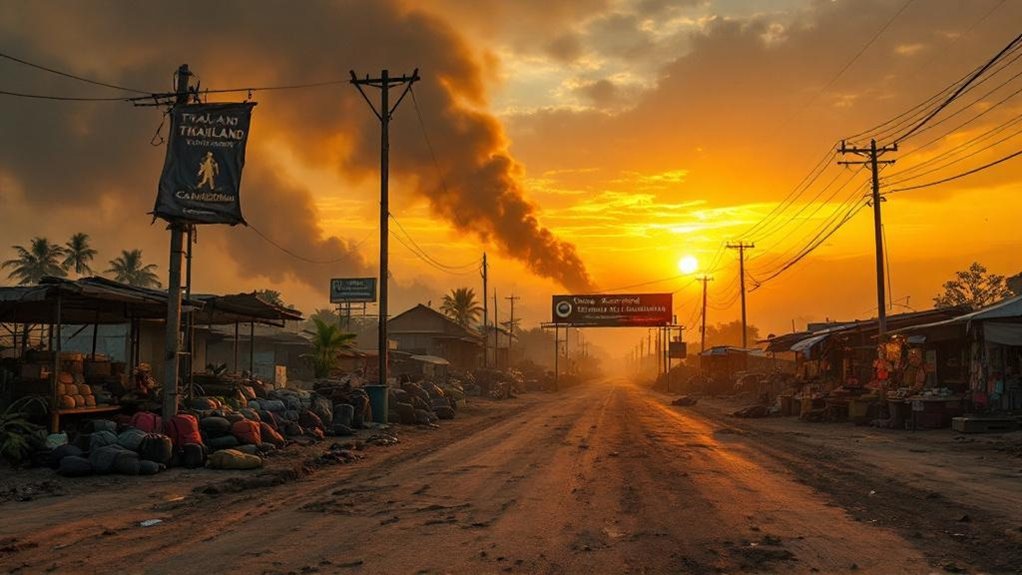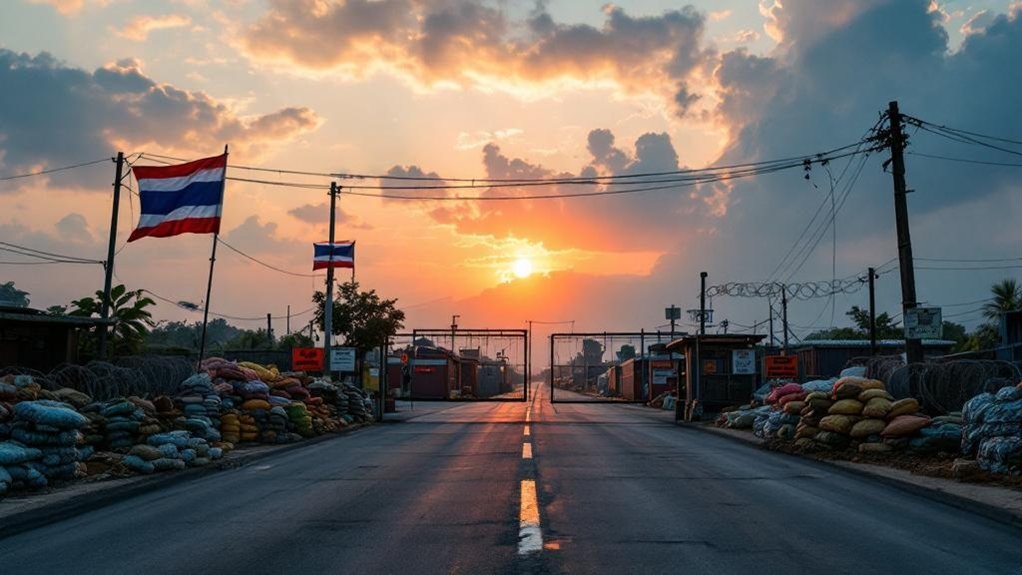The renewed conflict along the Thai-Cambodian border since July 2025 has escalated considerably, resulting in at least 34 deaths and the displacement of nearly 200,000 civilians. Military confrontations have intensified with artillery shelling and airstrikes, disrupting travel as regional stability deteriorates. This situation, rooted in historical territorial disputes, affects tourism and commerce, primarily impacting international visitors from the UK and US. Understanding the broader implications and responses to this crisis reveals more about its evolving dynamics.
Amid escalating tensions along their disputed border, Thailand and Cambodia have been embroiled in renewed armed conflict since July 24, 2025, resulting in at least 34 deaths, including 13 civilians and 8 soldiers from Thailand, and 8 civilians and 5 soldiers from Cambodia. This resurgence of violence has spread to at least 12 distinct locations along the border region.
The conflict has caused significant displacement, with estimates suggesting up to 200,000 civilians have been affected as they flee the active combat zones. The intense fighting has involved artillery shelling and F-16 airstrikes, marking a significant military escalation.
The territorial dispute between the two nations dates back to the early 20th century, rooted in Franco-Siamese treaties during French colonization of Cambodia. Central to the dispute is the Preah Vihear Temple, awarded to Cambodia by the International Court of Justice in 1962.
However, nationalist sentiments and ambiguities over the borders have fueled repeated tensions since 2008, with previous skirmishes from 2008 to 2011 leading to casualties and periodic escalations.
Nationalist fervor and border ambiguities have spurred recurring tensions and casualties from 2008 to 2011.
The immediate triggers leading to the July 2025 clashes include an incident on July 23, when a Thai soldier stepped on a landmine in Nam Yuen district, losing a leg. This event intensified tensions that had been building up since Cambodia reinforced multiple positions along the border prior to May 2025.
Diplomatic relations deteriorated further as Thailand expelled Cambodia’s envoy and recalled its ambassador days before the fighting commenced. During this period, reports indicated that satellite data analysis showed significant military activity along the border.
The human impact is severe, with nearly 200,000 civilians displaced, complicating emergency humanitarian response efforts. The conflict has also disrupted tourism and commerce, particularly impacting international visitors from the UK and US.
The ongoing fighting poses significant challenges to movement across the border, both for local communities and tourists. Thailand’s rejection of third-party mediation offers from the U.S., China, and Malaysia in favor of bilateral talks underscores the complexity of resolving the dispute.
Geopolitically, the conflict threatens ASEAN regional stability, with international players like the U.S. and China potentially becoming diplomatically involved to mediate.
The situation emphasizes the fragility of diplomatic frameworks in Southeast Asia and could have lasting implications on regional relations. As the conflict continues, the international community faces mounting pressure to intervene and prevent further escalation.









